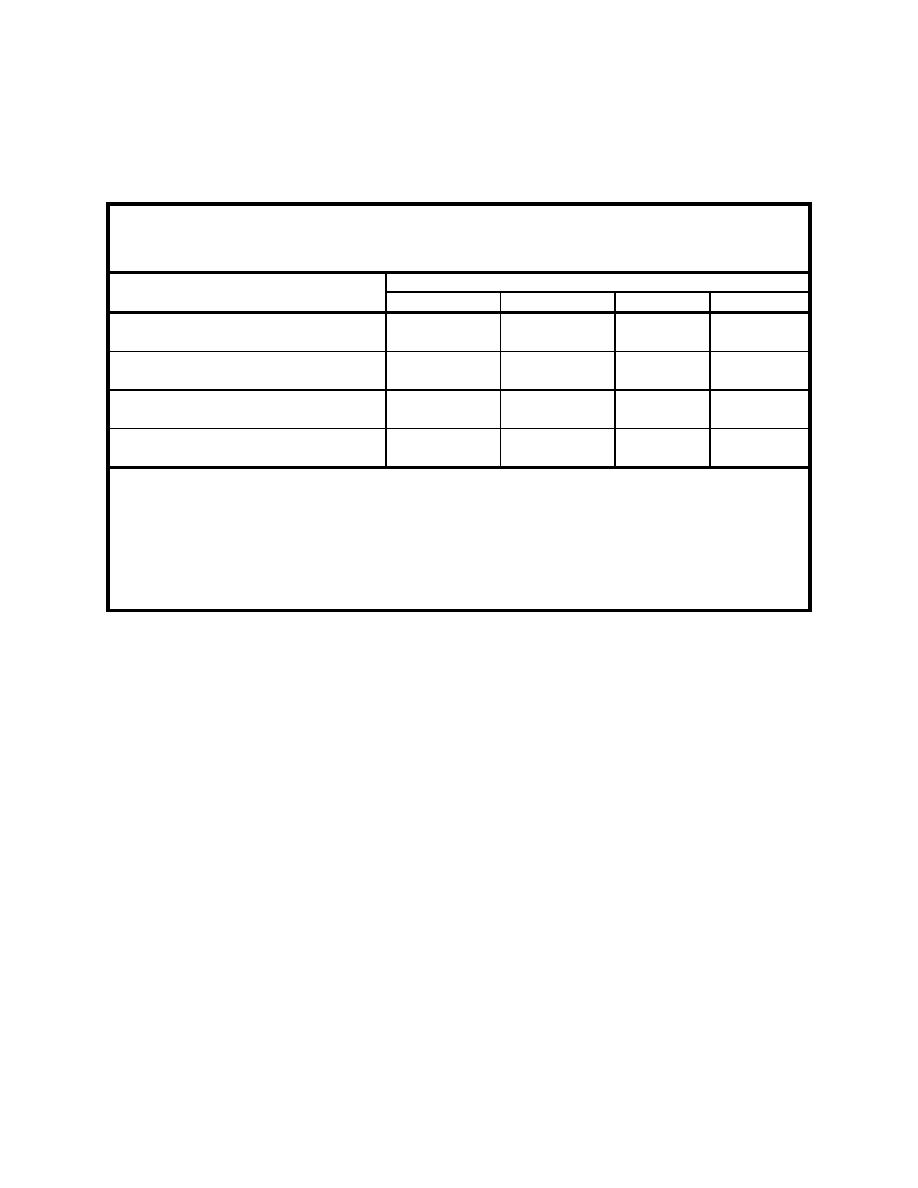 |
||
|
|
||
|
Page Title:
Table 7. Property and Test Method for Geosynthetics and Recommended Minimum Properties for General Geomembrane Installation S... |
||
| |||||||||||||||
|
|
 ERDC TN-DOER-R6
December 2004
may employ performance-based contracts (e.g., contractor meets hydraulic conductivity requirements of
liner system) as opposed to the specification-based contracts normally required in landfill construction,
which may prescribe use of specific materials with specific thicknesses. Last, superior quality assurance
and quality control procedures must be maintained throughout the period of liner construction.
Table 7
Property and Test Method for Geosynthetics and Recommended Minimum Properties
for General Geomembrane Installation Survivability (after Koerner (1990))
Required Degree of Survivability
1
Medium2
High3
Very High4
Geosynthetic Property and Test Method
Low
Thickness
20 mils
25 mils
30 mils
40 mils
(ASTM D1593) (ASTM 1999a)
0.50 mm
0.63 mm
0.75 mm
1.00 mm
Tensile (1.0 [in] 25 [mm]) strip)
30 lb/in
40 lb/in
50 lb/in
60 lb/in
(ASTM D882) (ASTM 2002)
5.2 kN/m
7.0 kN/m
8.7 kN/m
10.5 kN/m
Tear
5 lb
7.3 lb
10 lb
15 lb
(ASTM D1004 Die C) (ASTM 2003)
22 N
33 N
45 N
67 N
Puncture
20 lb
25 lb
30 lb
35 lb
(ASTM D3787 mod.) (ASTM 2001)
90 N
110 N
130 N
160 N
1
Low refers to careful hand placement on very uniform well-graded subgrade with light loads of a static nature -
typical of vapor barriers beneath building floor slabs.
2
Medium refers to hand or machine placement in machine-graded subgrade with medium loads - typical of canal
liners.
3
High refers to hand or machine placement on machine-graded subgrade of poor texture with high loads - typical
of landfill liners and covers.
4
Very High refers to hand or machine placement on machine-graded subgrade of very poor texture with high
loads typical of reservoir covers and liners for heap leach pads.
and optimum shear strength, liners must be compacted to a maximum dry unit weight and within a
specified range of water content (Qian 1995). The dry unit weight of the compacted soil is usually
specified to be 95 percent of the maximum dry unit weight from standard Proctor compaction (ASTM
D698-00a (ASTM 2000g) or 90 percent of the maximum dry unit weight from modified Proctor
compaction (ASTM D1557-00 (ASTM 2000h)) (Herrmann and Elsbury 1987). This criterion was
historically based on the desires of earthwork construction designers to achieve a maximum dry unit
weight for adequate strength and limited compressibility (Qian 1995). Optimum water contents are
usually 0 to 4 percent wet of standard or modified Proctor optimum because the wet-side compaction
minimizes hydraulic conductivity (Lambe 1958, Boynton and Daniel 1985, Qian 1995) in the short term,
though long-term conductivity may be greater after drying.
Site Accessibility. CDFs may be located in rather remote and difficult-to-access areas. Although
equipment for liner installation, primarily consisting of scrapers, crawler-mounted tractors, dump trucks,
compactors, and cranes is relatively easy to transport on barges or constructed roads, additional
mobilization effort may be required to move equipment down steep slopes or across more remote areas.
Trafficability. CDF sites often possess an unstable working surface prior to construction and during
operation because of high water content and the presence of low shear-strength dredged material,
resulting in reductions in trafficability. These environments can be improved through application of
geotextiles and granular soils to assist trafficability. FM 5-410 (HQDA 1992) provides design guidance
on improving bearing strength of low shear-strength soils.
17
|
|
Privacy Statement - Press Release - Copyright Information. - Contact Us - Support Integrated Publishing |